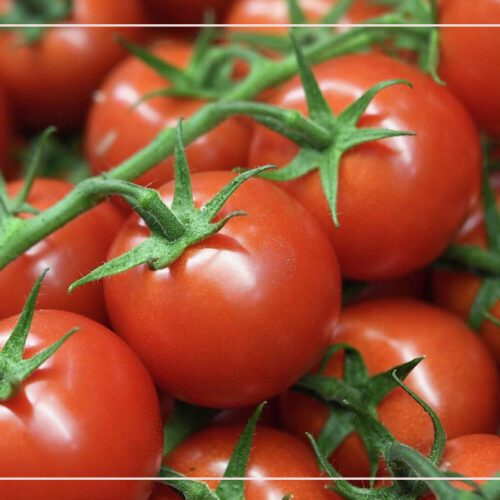
Root Rot Diseases in Plants
Root rot diseases and root-knot nematodes are two of the most common plant diseases that can cause significant damage to crops. These pathogens can affect a wide range of plants, from vegetables to fruit trees, and can cause severe crop losses if not properly managed. Root rot wilt diseases are caused by fungal pathogens that infect the roots of plants, while root-knot nematodes are parasitic worms that feed on plant tissue. In this article, we will discuss the causes and symptoms of these two types of plant disease, as well as how to control them using proper management practices. We will also discuss the importance of properly identifying these pathogens in order to prevent future outbreaks.
Root rot disease
What is root rot disease?
Root rot is one of the most detrimental diseases that can affect trees and other plants. It typically flourishes in wet or damp areas, causing poor growth, wilted leaves, early leaf drop, branch dieback, and ultimately death. This issue can affect any type of plant and should not be overlooked as preventive measures are the best way to stop it.
Causes of root rot
- Poor soil drainage or excessive water levels are the primary contributors to root rot. A combination of other factors can also contribute to this plant disease. When the roots cannot take in enough oxygen to stay alive, they rot and break down. This decaying can then spread to other healthy roots if the soil is over-saturated.
- Poorly developed roots can be more vulnerable to soil-borne fungi, one of the main elements causing root rot. Fungi may remain inactive in the soil for a while; once it becomes waterlogged, spores can germinate and begin feeding on the roots, resulting in root decay and death.
- Different species of fungi that need high moisture to thrive can cause root rot, such as Pythium, Phytophthora, Rhizoctonia, and Fusarium. Armillaria also known as shoestring rot is very destructive in nature and can create a lot of issues for hardwoods and conifers in a particular area.
Symptoms and Diagnosing
It can be difficult to diagnose root rot since the symptoms are quite similar to those of a pest infestation. However, it’s much simpler to identify signs of root rot when they present themselves above ground.
- A puzzling decrease, either progressive or sudden, with no apparent explanation.
- Poor unbalanced growth.
- Small, pale leaves that may appear wilted, yellowed, or browned in color, as well.
- Branches are dying off and the tree canopy is getting thinner.
- On certain plants, the fungus can spread from the roots and make its way to the inner bark, creating dead patches or cankers.
- To effectively identify the deteriorating nature of the disease, digging underground is essential. A Pulaski can be used to this end as it is double-sided, one side to cut, and the other for scraping or excavation. This is an effective and precise way to diagnose and understand this illness.
Care must be taken when performing any tree maintenance to prevent additional harm from being done. Taking the necessary precautions can help ensure the tree remains healthy and strong.
Preventing and Control
- The most effective way to address tree root diseases is to prevent them from occurring in the first place. This can be done by selecting disease-resistant varieties of trees when planting, ensuring that the soil is well-drained and only watering enough to meet the tree’s needs. Additionally, irrigation moats can be utilized to stop water from accumulating by the trunk.
- Pruning the diseased roots is an effective way to save moderately affected trees. It is important to disinfect any tools used during the process if you intend to use them again. In cases where a tree has advanced infection, it is best to remove it altogether. This would help to prevent contagion and protect healthy trees.
- Utilizing chemicals, including chloropicrin or methyl bromide, to treat the disease may not alleviate it entirely however can help cut back its magnitude. These fumigants are used in and around the base of afflicted trees or openings left behind after a tree has been eliminated.
- Ultimately, it is important to use organic products such as Tricho Protect which contains Trichoderma Harzianum. This fungicide has been proven to be one of the most effective globally in controlling root diseases before they cause any damage.
Root-knot nematodes
Root-knot nematodes, which are also called eelworms and belong to the genus Meloidogyne, are of great detriment to crops. They can affect many different kinds of plants and cause severe damage in an agricultural context. Potatoes in particular suffer from their presence, however only in warmer climates.
Generally speaking, root-knot nematodes are usually not a large issue in cooler production zones. The most significant losses happen when potatoes are intensively grown or rotated with other susceptible crops.
Symptoms
- Potato plants with infestations may present themselves in the form of stunted growth, yellowed leaves, and wilting when under extreme moisture stress. Additionally, root swellings, galls, beads, and knots may be visible; hence the popular name associated with them.
- Potatoes under the influence of this disease typically present with blistering and swelling. Its impact is more discernible when grown in sandy soil and warm temperatures above 25°C.
- Potato root-knot nematode is known to have a detrimental effect on the quality, size, and quantity of tubers. Furthermore, this leads to the development of bacterial wilt caused by Ralstonia solanacearum. When combined with fungal pathogens such as Verticillium and Rhizoctonia, symptoms can be even more severe.
How to Control nematodes?
There is currently no potato cultivar that has resistance to root-knot nematode; making chemical control a difficult and potentially expensive option for potato growers.
- Use the following methods to control root-knot nematode:
- It is important to observe crops for signs of infection from root-knot nematodes.
- Practice good farm hygiene and use Neem Protect. It’s a soil supplement commonly used to enrich the soil, reduce nitrogen loss, and protect plants from soil-based pathogens. It also functions as a natural nematicide.
- It is advisable to avoid cultivating susceptible crops in paddocks that are contaminated with root-knot nematodes.
Don’t forget to apply crop rotation with crops like grasses, cereals (barley, rye, wheat), etc. that are resistant to pests or do not act as hosts to them. Plus, use a weed-free fallow that can be used to effectively decrease nematode populations.
Related Topic
Neem Oil: Magic In a Bottle
Common Questions
-
How do you control root rot nematodes?
Killing nematodes can be done by heating small amounts of damp soil to 140°F, with either an oven or through solarization. It is practical for small batches of soil. Moreover, the amount of heat needed to make sure the nematodes are killed is equivalent to baking a potato in the center of the soil.
-
Can you stop root rot on a plant?
Root rot in gardens is typically caused by fungi and can be avoided with effective soil drainage prior to planting. While most may think that too much water is the reason for root rot, it actually creates a conducive environment for fungi to thrive.
-
Does cinnamon stop root rot?
Cinnamon is a natural fungicide, similar to sulfur, and helps with the rooting process of plants. It also prevents spores from affecting stem cuttings and causing decomposition. To use it as a rooting hormone, simply dip the prepared stems in cinnamon before pushing them into the soil. This is an effective and inexpensive way to promote the healthy growth of plants.





